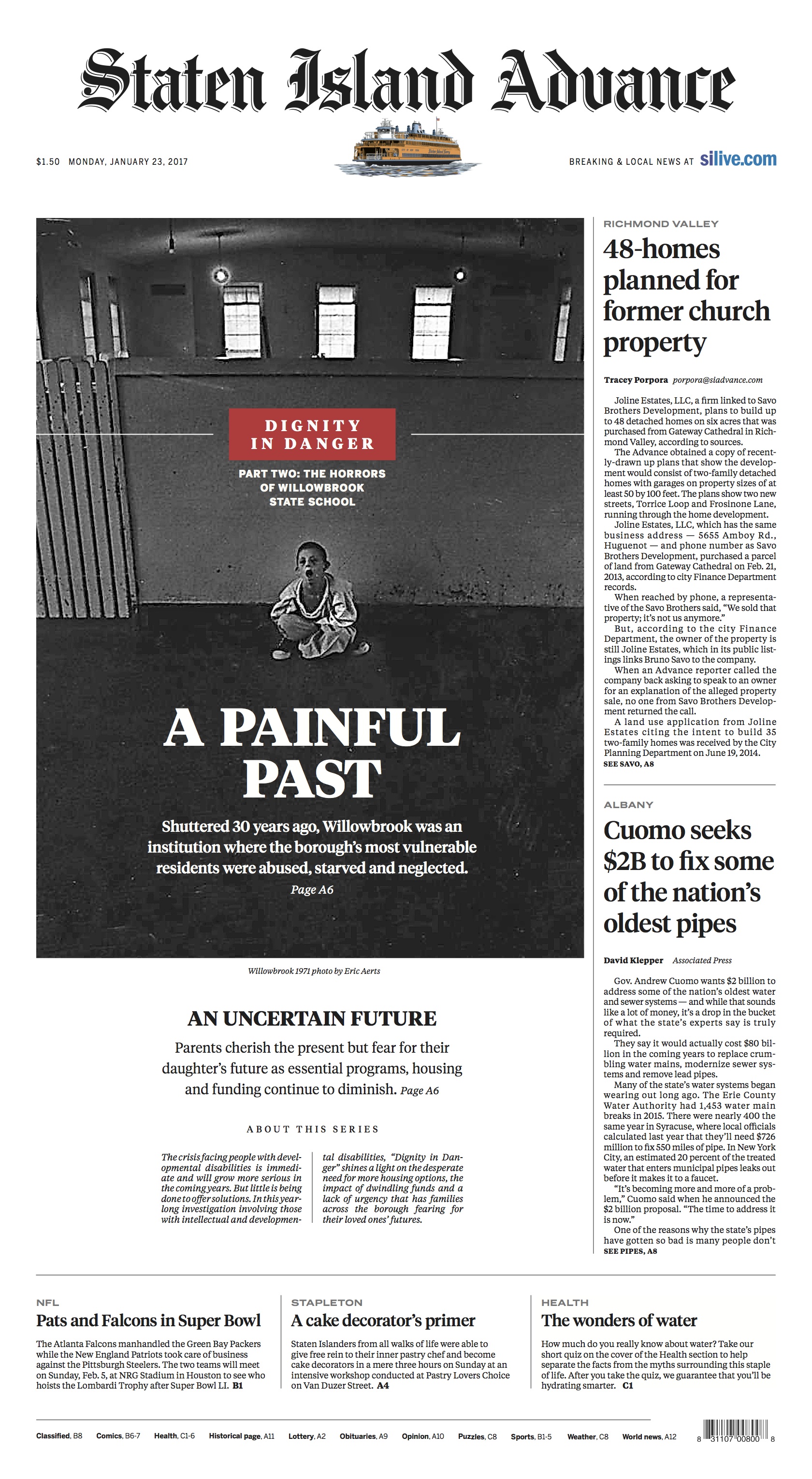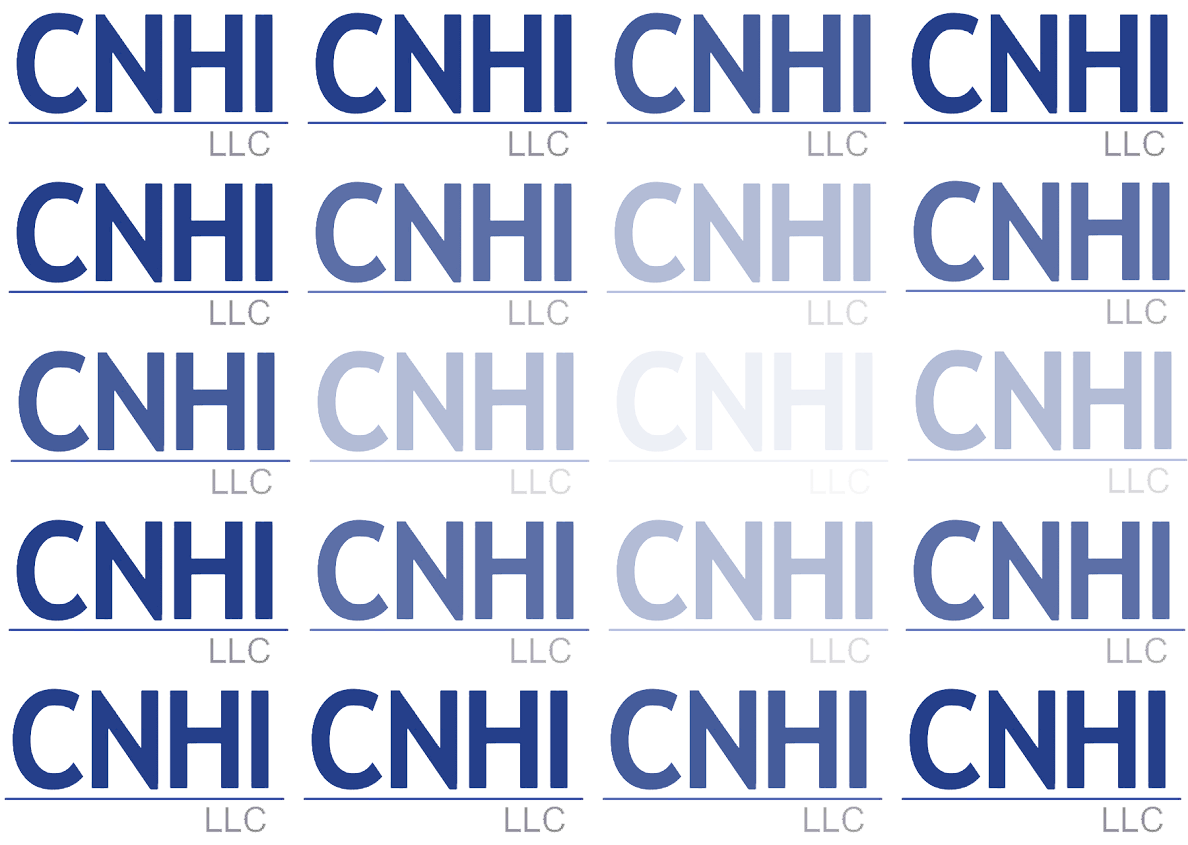The Staten Island Advance didn’t go out and find its latest project. It came to the newsroom. In a bus.
Last January, the Staten Island Developmental Disabilities Council brought more than three dozen people to several places, including the New York newspaper, calling for attention to a growing issue in the community: Who will take care of adults with intellectual and developmental disabilities when their parents no longer can?
The Advance listened.
In January, it launched “Dignity in Danger.” The series features the personal stories of families, how local representatives are responding, resources for readers and an editorial calling for action.
It combines advocacy, storytelling and a dig into the archives of a 131-year-old newspaper that’s finally started thinking digitally.
Advance
In 2009, Advance Publications started making big changes. The company, based in Staten Island, closed the Ann Arbor News. It reduced print publication to three days a week in New Orleans (it later resumed some daily editions). Across the company, there were years of layoffs.
The Staten Island Advance still puts out a newspaper every day. But it hasn’t ducked cuts or changes, either. In 2015, the paper joined other news organizations that outsourced editing and print production. The Advance wouldn’t provide a newsroom headcount, but Thomas Checchi, news manager for public interest and advocacy, figures it’s about half the size it once was.
When the pivot to digital came to Staten Island a few years ago, Checchi was assistant managing editor. He focused on big-impact journalism for the Thursday and Sunday papers. Now, he leads a three-person public interest and advocacy team online.
“It was important after the digital transition to maintain focus on critical issues in our community, so we created what is now Public Interest and Advocacy,” Checchi said.
It’s a huge shift from how things worked when Checchi started as an intern in 1978. In fact, it’s a huge shift from five years ago.
“When I look back at when we had all these reporters, and I had a city hall reporter who was writing, literally, like four stories a day, we just put it in the paper and figured everyone was reading it,” he said. “Nobody was reading that shit. They were buying the paper to read the obituaries and maybe a front-page story.”
Gail Lubin, Advance Digital’s senior content strategist, was brought in to lead the transition into digital in Staten Island in 2013. She found a newsroom ill-equipped to serve its audience.
Literally.
“When I started, no one in the newsroom except for a few photographers had a laptop,” said Lubin, who’s now content director. Few people had company smartphones. “We started from the ground-up to build something where we could report from anywhere and become digitally focused.”
There was little communication of metrics, so people didn’t know which stories were popular. Deadlines were print-oriented. No one was really thinking about getting the daily news out during the day.
One key element, Lubin said, was reorganizing newsroom leadership into two groups: print and web specialists. They changed deadlines. They reorganized teams.
One result of thinking about how to serve readers on all platforms: huge digital growth. The first year after launching the changes, pageviews were up 46 percent, Lubin said.
Last year, they were up another 21 percent.
Communication is still a big challenge for the newsroom. It used to be one team thinking about one platform – print. Now, it’s several teams, and they have to talk to each other.
With their latest series, they did, Lubin said. “Dignity in Danger,” exemplifies this evolving approach to local journalism.
‘I do really want to help them and to tell their stories.’
On a chilly, gray afternoon last January, reporter Kristin Dalton headed out to the parking lot to meet people from the Staten Island Developmental Disabilities Council. They climbed off the bus into the cold with signs that read “I don’t sleep at night, help my disabled child,” and “My child needs a home.”
More than 30 people rushed past Dalton and into the newsroom.
Most stayed in the entryway. Those who made it inside demanded to talk with Executive Editor Brian Laline. As he spoke with them about meeting with the editorial board, Dalton started reporting, getting names and numbers of people to follow up. She wrote a short piece about their visit, then started calling the people she met that day.
She realized there was a lot more to cover.
Dalton began attending parent and advocate meetings. She went to schools and nonprofits. And she kept going back.
“Gaining their trust was difficult, but I kept showing up, and I kept calling,” Dalton said. “They figured out after a while that I was genuine, and I do really want to help them and to tell their stories.”
Videographer Amanda Steen and photographer Bill Lyons did the same.
They report that in New York State, 11,000 people are on the housing wait list for the Office for People With Developmental Disabilities. Two thousand people are in need of emergency housing. The state would need to build 1,400 homes to fill those needs.
The project also includes a disturbing reminder of why getting this right matters.
Dalton, whose first job at the Advance was creating digital vintage galleries from the archives, knew they had access to images and coverage of the story of Staten Island’s own Willowbrook State School. That school, finally closed in 1987, serves as a specter in both Staten Island and the disability rights community thanks to decades of neglect, abuse and inhuman treatment.
Going into the past felt like a necessary part of the story, she said.
“In the minds of all these people, there is that fear of going backwards and that Willowbrook happen again,” Dalton said. “I felt it was really important to show how far we have come since Willowbrook closed.”
It is the most viewed-part of the project.
Landing
The Advance tried two firsts with “Dignity in Danger.”
They collected everything on a single landing page, and they published the whole series at once. Neither of those things are revolutionary, but they still pushed against old habits.
Checchi, a longtime print guy, didn’t understand at first why they wouldn’t tease the series out and bring readers along each day.
“But now it completely makes sense to me how this works,” he said.
The series went live on a Tuesday night with no social promotion or homepage placement. When Checchi got to the newsroom Wednesday morning, he went to put one of the stories there, but it was already in their “most read” stream.
“It was like the readers chose what they liked best,” he said. “I found it odd initially. Now I really get it.”
Publishing everything simultaneously in one place made sense for this series, Lubin said. It’s an emotional issue full of subtleties: financial, personal, political.
Readers need each element to understand what families in Staten Island are facing. And in the digital space, people need a lot of points of entry.
Separate teams helped decide early on how this story could play on different platforms, They created a profile video for Instagram, a preview video for Facebook and social cards highlighting the need for action.
They also took care with the series in print. Jen Cieslak, a print design specialist with Advance Digital, took cues from the series’ title, wanting to show what was at stake while preserving the dignity of those featured.
On the day they led with Willowbrook on the front page, there were a lot of images to choose from.
“The challenge was not in finding a strong photo — but in finding a photo that showed the horror of Willowbrook in a way that didn’t exploit the victims, and then connecting that to the modern-day struggles of people with disabilities,” Cieslak said. “I wanted to draw a dotted line between the two, but make sure not to equate them visually.”
The project’s combined reach on the site through unique visits and on Facebook is more than 300,000. And they’re not done yet. Another video profile is in the works, and this week, the Advance will take an editorial stance on the issue and propose solutions.
“Dignity in Danger” offers a starting point for an old news organization that’s working in new ways. There are also lessons in what they will do differently. For instance, Lubin wishes they’d reached out to other New York news organizations to partner on the project and have a bigger impact.
“This is a local story,” she said, “but really has statewide implications, and I think it’s important for other citizens of New York.”
For all the changes that have happened at the Staten Island Advance, one key to the “Dignity in Danger” series is quite old. Dalton, Steen and Lyons all had to build relationships in the community they covered and with the families who let them in.
It took a year of reporting while keeping up with their own daily work. It took persistence when families that seemed eager to talk thought better of it and Dalton had to start over with new people. And it took care to respect the lives and voices of the families who let the Advance in.
Those aren’t new skills. They can’t be measured by analytics. But they are still essential.








